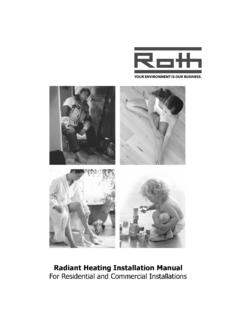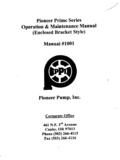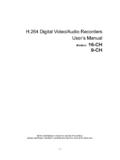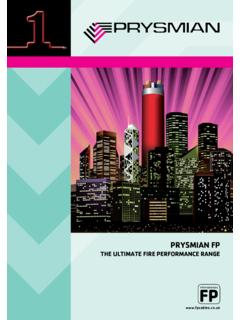Transcription of Trends & Challenges for the third party TIC Sector …
1 September 2015. White Trends & Challenges Paper for the third party TIC Sector And its implications for CEOC International 1. September 2015. Contents THE TESTING, INSPECTION AND CERTIFICATION Sector .. 3. 1. 3. 3. The TIC market .. 3. TIC associations .. 4. 2. Global Safety The role of the TIC 6. The added value of (independent third party ) testing, inspection and certification .. 6. Why third party involvement makes a 6. Shared responsibility for ensuring safe and compliant 7. 3. The TIC Sector position on .. 7.. a harmonised and well-functioning accreditation system .. 7. the developments concerning ISO / IEC standards .. 8. the European Conformity Assessment System .. 9. the Transatlantic Trade and Investment Partnership (TTIP) .. 10. relations with other stakeholders .. 11. 4. CEOC International as the recognised voice of safety and 11. List of Abbreviations and Acronyms .. 12. 2. September 2015. THE TESTING, INSPECTION AND CERTIFICATION Sector .
2 1. Introduction Testing, Inspection and Certification (TIC) companies cater to a diverse range of industry sectors across the world with a variety of standards and legislation. Examples for sectors serviced by TIC. company services include agriculture, automotive, commodities, consumer, environmental, food, life sciences, industrial, maritime, medical, oil & gas, petrochemical, leisure, education, systems compliance, and trade assurance. Services include quality and safety through product performance evaluations, certification and valuation of shipments, consulting, advisory, ensuring imports comply with relevant standards, industrial inspections, auditing, systems certification, supplier evaluation and laboratory outsourcing, services in the energy and transportation sectors and many more. Services provided by independent third parties can offer a number of benefits to public authorities, industry and consumers through safer products and machinery.
3 It provides greater consumer protection, safer products and industrial installations, reduces compliance costs for SMEs and increases brand reputations and consumers' trust and confidence in a product by ensuring that products, infrastructures and processes meet the required standards and regulations in terms of quality, health and safety, environmental protection and social responsibility and can, therefore, also be a facilitator to international trade. It is important that all stakeholders involved (regulators, market surveillance authorities, manufacturers, site operators and TIC companies) have a common understanding of all the relevant standards, rules and regulations, and that mechanisms are in place to ensure compliance with the necessary requirements. Globalisation In a world characterised by rapid change and new technologies, energies, increasing Health, Safety, Environmental (HSE) and Quality regulations, changes to the supply chain, outsourcing and rising end user quality expectations, the TIC Sector plays a key role.
4 TIC services ensure that products, infrastructures and processes meet the required standards and regulations in terms of quality, health and safety, environmental protection and social responsibility reducing the risk of failure, accidents and disruption. Since the adoption of the General Product Safety Directive in 1995 global trade has increased many fold. Global exports increased from $ in 1995 to $ in 2010. This also resulted in an increasing number of unsafe and non-compliant products entering the European market (see the annual RAPEX reports for further information1). At the same time as this increase many public authorities had to cut their budgets to implement austerity programmes, thereby reducing market surveillance. TIC services can be an effective complementary solution to these developments. TIC companies adapted their services to the changes in the global supply chain and can test, inspect and certify products regardless of where in the world they are being manufactured or installed.
5 The TIC market The market suggests that over the last 15 years the TIC Sector has grown overall at a CAGR. (Compounded Annual Growth Rate) of five to six per cent and is expected to grow further in the coming years, although this includes a wide range of variability across sub-sectors. This positive 1. 3. September 2015. outlook can be attributed to factors such as strong GDP growth in the BRIC2 countries; an increasing drive to enforce regulations by governments; international trade in products and services; and moves towards industry standardization as a result of better, more reliable and safer products, with increasing end-user awareness associating a safe business with a profitable business. This constant growth has allowed the TIC Sector to meet future Challenges , to continue providing competent and independent services and to follow their clients to whichever region in the world they choose to produce their products.
6 TIC is a 100bn global market, including both in-house and outsourced activities. Beyond the top 15. players, who account for 40% of the addressable market and who are mainly headquartered in Europe, the global TIC Sector remains a highly fragmented market. It is estimated that there are many thousands of TIC companies worldwide, mostly SME/micro companies operating locally or in niche disciplines. However, they account for 60% of the market and should not be ignored. TIC associations Not only the TIC market itself but also the representation through associations is highly fragmented. In Europe alone, more than 20 different associations represent the TIC Sector ,3 either focussing on specific services of the Sector ( non-destructive testing or certification) or more generally. The solution to this fragmentation is for associations to work together to raise standards and create a level playing field. This makes particular sense as the primary aim of all these associations is very similar the promotion of TIC services and raising standards.
7 By working together and focussing on common goals, associations can present a stronger single voice to authorities and avoid inconsistent messages. Examples of these co-operations are the EA CAB College, where associations of conformity assessment bodies meet to discuss accreditation issues, the 4E+C meetings (representatives of Eurament, Eurachem, EUROLAB, EA and CEOC International) and joint committees, such as the joint CEOC International EUROLAB (- IFIA) technical committee on product testing and certification (JTC. PTC). These forms of co-operation should be extended into other areas and include additional associations, such as national trade associations which are members of EU or international associations. 2. BRIC: Barzil, Russia, India and China 3. Most, but not all of those, are based in and mainly focused on Europe, but also the international associations are trying to achieve a stronger representation in Europe.
8 4. September 2015. Overview of the main European and international TIC associations4. The fragmentation of associations leads not only to an overlap in topics covered by the associations but also to an overlap in membership. Some of the Top 15 TIC companies are (directly or indirectly through national associations) members of up to 9 TIC. associations. Company CEOC IFIA EURO EFNDT EFAC EEPCA IIOC IQNet IACS CIECA CITA CIAC EOQ UILI TEAM-NB. LAB. SGS- ( ) ( ) ( ) ( ) ( ) . Group Bureau ( ) ( ) ( ) . Veritas SA. Intertek ( ) . DNV GL . Group DEKRA SE ( ) ( ) ( ) . T V S D ( ) ( ) . AG. T V ( ) ( ) ( ) . Rheinland AG. Applus ( ) ( ) . Eurofins ( ) . Lloyd . Register Group UL . T V Nord ( ) . Group ALS . Limited Apave ( ) ( ). Group RINA . Group = direct membership ; ( ) indirect membership 4. 5. September 2015. 2. Global Safety The role of the TIC Sector Trade in products and services is increasing every day and manufacturing industries, mainly outside Europe are expanding.
9 The value chain is becoming ever more complex, and safety cultures still vary between different economic areas. Market controls have been too slow to respond to this development and this has brought about an increase of products, which do not meet safety or quality requirements. This has led to an increased political interest and public concern and created the divisive argument between quality and safety versus an open market with cheap goods and unhindered by bureaucracy. This has resulted in the demand for increased supervision and market surveillance by national governments and by local public authorities, but who may not have the capacity and resources to achieve this. The international TIC Sector can respond to this at the beginning of the value chain by offering cost effective testing, inspection and certification services no matter where in the world the product is produced. By applying this preventive approach TIC services are complementary to market surveillance activities, which are random based and reactive after the products have already been placed on the market.
10 Both instruments together ensure safe and compliant products in the market. The above demonstrates the added value of TIC services to society and justifies the foundation, professional or charitable status of the Sector . The added value of (independent third party ) testing, inspection and certification The independent TIC Sector can offer many benefits to public authorities, industry and consumers. From protecting citizens from unsafe products and industrial installations, to reducing compliance costs for SMEs, to enhancing brand reputation and increasing consumers' trust into a product. To be more precise: Manufacturers that use safe facilities to produce safe products can save money and are in many cases more competitive because of fewer business risks (recalls, liability issues etc.). occurring. The TIC Sector can provide services to support this development. The state ensures the safety of its citizens by making it obligatory for products with high-risk potential to be tested, inspected and certified by an independent third party .





